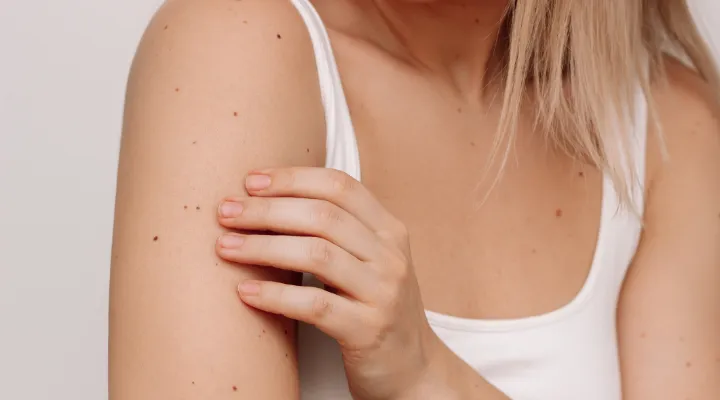Orthodontics is a dental procedure that improves the position and function of the teeth and jawbones. In addition to aesthetics and function, it also affects their health, as it can prevent many dental and gum diseases.
WHEN DO YOU NEED ORTHODONTIC TREATMENT?
Orthodontic treatment is needed when the position and alignment of the teeth or jawbones are inappropriate and cannot function harmoniously. The orthodontist defines the need for the treatment after a thorough oral examination. During the examination, X-rays, dental proofs, and photographs are taken and the orthodontist will draw up an orthodontic plan.
AT WHAT AGE IS ORTHODONTIC TREATMENT RECOMMENDED?
Orthodontic treatment is possible at any age if the gums and teeth are healthy. The ideal time for orthodontic treatment is during childhood when the teeth and jawbones are still growing and therefore easier to move. Even in babyhood, braces may be needed to stop bad habits such as pacifier use, sucking on fingers or tongue, and grinding. In the early stage of adolescence, during the intensive developmental phase, the growth of the jawbones can be directed in the desired direction, preventing possible dental problems in the future. In the case of adults, in addition to aesthetic or prosthetic reasons, the treatment of joint problems may also be a goal, since the position of the teeth and jawbones affects the functioning of the jaw joint and the stiffness and tightness of the head and neck region.
WHEN IS ORTHODONTICS RECOMMENDED IN CHILDHOOD?
Orthodontic treatment in childhood can help to influence the development of the facial cranium, the positioning of the teeth, and the shaping of the bite. In addition to correcting malocclusions and bite patterns, the indications for orthodontic treatment in childhood include, among others, correcting speech defects, correcting bad habits of childhood, developing an ideal bite height, and making teeth easier to clean by achieving the correct position. Orthodontic treatment is less predictable in childhood because the final state of the dentition has not yet been established. Orthodontic treatment must be executed by a qualified dentist, who involves allied professionals in the treatment process when necessary. It is important to highlight that the role of the parents is crucial in supervising and motivating the child.
WHEN IS ORTHODONTICS RECOMMENDED IN ADULTHOOD?
Orthodontic treatment can be used in adulthood to achieve a healthy, neat, beautiful smile, creating facial harmony and improving quality of life. Indications for orthodontic treatment in adulthood include correction of abnormal bite patterns, treatment of jaw joint problems, creation of extra space for old missing teeth by correcting the axis of the teeth to allow for the insertion of an implant or a suitable bridge replacement, easier cleaning of teeth, prevention or treatment of periodontal disease. Orthodontic treatment is easier in adulthood than in childhood because the final state of the dentition is already established. However, it is slower because the responsiveness of the tissues decreases with age.
WHY IS IT NECESSARY TO INVOLVE A SPEECH THERAPIST OR CHIROPRACTOR IN THE ORTHODONTIC PROCESS?
The complete facial and jaw joint system is affected by the orthodontic treatment, not only the teeth, therefore, it is important to involve a speech therapist or chiropractor during the treatment, if necessary. The speech and language therapist's role includes identifying and treating muscle dysfunction, bad habits, speech problems, or swallowing disorders associated with orthodontic treatment. A chiropractor's job is to relieve tension, pain, or limited movement in the jaw joint and cervical spine caused by poor head and body posture. Chiropractic care and speech and language therapy can help to ensure that the results of orthodontic treatment are long-lasting.
WHAT TYPES OF ORTHODONTIC DEVICES ARE THERE?
Braces can be divided into two broad categories: fixed and removable. Fixed devices are placed on the teeth by the orthodontist and can only be removed by the orthodontist. They usually consist of metal or ceramic locks and arches that move the teeth in the required direction. Fixed devices have the advantage of being effective and accurate; the disadvantage is that they are more difficult to clean and less aesthetic. Removable plastic devices are more aesthetic and can be put on and taken off for cleaning and eating by the patient. The disadvantage is that the treatment is less effective if the patient does not wear them as prescribed.
HOW LONG DOES ORTHODONTIC TREATMENT TAKE?
The duration of orthodontic treatment varies, it depends on the patient's dental condition, the purpose of the treatment, the type of orthodontic appliance, and the patient's cooperation. It may last from 6 months to 3 years but can be shorter or longer. The duration of orthodontic treatment is estimated by the orthodontist based on the orthodontic treatment plan but nothing is guaranteed as the movement of the teeth is not always predictable. The duration of the treatment can be shortened by careful wearing of the device and by following the instructions of the dentist or orthodontist.
WHAT ARE THE POSSIBLE SIDE EFFECTS OF ORTHODONTICS?
Orthodontics is generally a safe and painless procedure: there can be temporary and mild discomfort occasionally. The most common side effects are
- Tooth sensitivity: after the braces have been fitted and adjusted, teeth may become tense and more sensitive, - it usually lasts for a few hours to a few days. This discomfort can be relieved by eating soft foods, sucking on cold drinks or ice cubes, or taking painkillers.
- Gingivitis: Orthodontic devices are located close to the gums so gingivitis can appear if the device is not cleaned thoroughly. Gingivitis can be prevented and treated by regular toothbrushing, dental floss or interdental brush, and oral/gum care gel.
- Mucous membrane injuries: braces can irritate the mucous membrane of the mouth, causing small sores, blisters, and aphthae. These can be painful and uncomfortable, but usually heal quickly and can be helped by mouthwashes and gels.
- Tooth discoloration: while wearing an orthodontic device, the color of the teeth may change if the patient does not follow proper oral hygiene rules or if they consume foods and drinks that discolor the teeth, such as coffee, tea, or red wine. Tooth discoloration can be prevented and treated by regular brushing and regular professional cleaning by a dental professional.
- Tooth decay: The retention surfaces of the braces can make the teeth more susceptible to decay if the patient's device and oral care are inadequate. In such cases, more frequent dental hygiene is recommended to ensure that those surfaces – difficult to reach with a toothbrush – are regularly and thoroughly cleaned.
WHAT SHOULD PEOPLE WHO ALREADY HAVE BRACES PAY ATTENTION TO?
Special oral care is important during orthodontic treatment because braces might increase the risk of plaque and tartar build-up: these can lead to inflammation, tooth decay, periodontal disease, or other complications.
Steps for special oral care:
- Proper oral hygiene and healthy gums (no signs of inflammation) are prerequisites for treatment. This is why it is important to have your teeth thoroughly cleaned of plaque and tartar by a dental hygienist before starting orthodontic treatment.
- Regular, professional dental hygiene treatment is also important throughout the treatment, including plaque removal above and below the gums, polishing, and cleaning of areas that are difficult to reach with a toothbrush.
- Specific steps of home oral care:
-
A fixed device must be thoroughly cleaned from all directions as plaque sticks more easily to its surfaces. It is essential to choose the right toothbrush: regular and single-bristle toothbrushes are required accompanied by toothpaste and mouthwash with high fluoride content. Floss and toothbrushes are recommended as an additional aid.
-
For those with removable devices – in addition to conventional oral care – it is important to clean the bars with a toothbrush and occasionally disinfect them in special water with a cleaning tablet.
-
Don't forget to clean the back of the tongue, as the tongue can also carry bacteria and food crumbles that can cause bad breath or infection.
-
- After the treatment, teeth whitening can be done to enhance the aesthetic experience. Teeth whitening helps to remove discoloration from orthodontic treatment and makes your smile brighter. The dentist and the orthodontist determine the type and timing of whitening.
Orthodontic treatment can raise many questions by causing concerns but it is successful and effective if the patient is properly informed, advised, and cooperative.
If you have any further questions about orthodontics, don't hesitate to contact our dentists who are happy to help.




